
Whip up some El Niño pudding!
 You have probably heard people blame "El Niño" for everything from bad weather to lost homework. Now we are going to "blame El Niño" for inspiring a delicious and colorful dessert! Here's the recipe for El Niño pudding. What is El Niño anyway, besides a handy excuse when things go wrong? El Niño is a condition that sometimes occurs in the Pacific Ocean, but it is so big that it affects weather all over the world. Weather depends a lot on ocean temperatures. Where the ocean is warm, more clouds form, and more rain falls in that part of the world. In the Pacific Ocean, near the equator, the Sun makes the water especially warm on the surface. Normally, strong winds along the equator push the warm surface water near South America westward toward Indonesia. When this happens, the cooler water underneath rises up toward the surface of the ocean near South America. 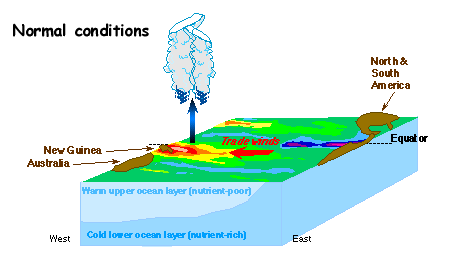 However, in the fall and winter of 1997-1998, these winds were much weaker than usual. They actually blew the other way (toward South America instead of Indonesia) in October. So the warm surface water along the equator piled up along the coast of South America (around Peru) and then moved north towards California and south toward Chile. Many fish that lived in the normally cooler waters off the coast of Peru moved away or died. The fishermen call this condition of warm coastal waters and poor fishing "El Niño" meaning "the Christ Child," because in the occasional years it comes, it comes at Christmas time. 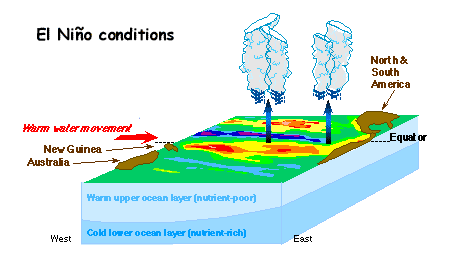 In 1997 and 1998, lots of rain clouds formed over this warm part of the ocean. These clouds moved inland and dumped much more rain than usual in South and Central America and in the United States. Meanwhile, other parts of the world suffered drought. Weather patterns all over the world were unusual, making lakes out of deserts and charcoal heaps out of rain forests.
How do we know what is happening to the ocean temperatures around the Earth? The best way is to go up into space! Where the ocean is warmer, sea level is slightly higher. The TOPEX/Poseidon satellite, in orbit around Earth since 1992, has a sensitive altimeter onboard. An altimeter measures height from itself down to the Earth's surface (land or water). 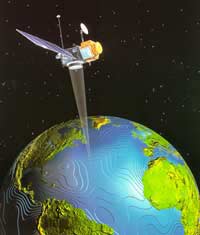 Using information from TOPEX/Poseidon, we can make topographical maps of the hills and valleys on the ocean's surface. The different heights of the ocean are shown on flat maps using different colors. 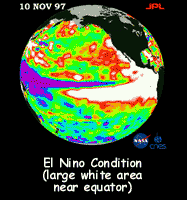 
In these maps, purple, blue, and green are the colder parts of the ocean where the sea level is a little lower. Red, pink, and white are the warmer parts where the surface of the ocean bulges upward a bit. The surface of the water where the ocean is warmest is only about 2 meters (a bit less than 7 feet) higher than in the coldest areas. Here's a movie (370 Kb) that shows the progress of El Niño from December 1996 through June 1998. Watch the white bulge of warm water travel across the Pacific ocean. But is it only at the surface that the water is warmer or colder? No way! Where the ocean shows red or white on the map the water is warmer to depths of hundreds of feet!
As you make your El Niño pudding, think about the TOPEX/Poseidon satellite. It is like a minivan full of instruments up in space. It goes around the world 4,700 times a year making maps of the sea surface height. TOPEX/Poseidon is one of several satellites that keep an eye on our oceans and add to the information we get from ships and buoys. |
|
|
|||||
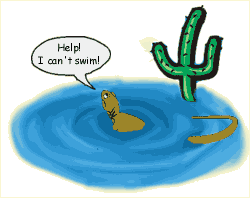
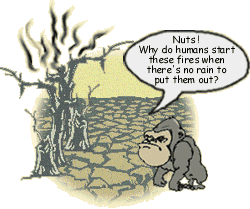

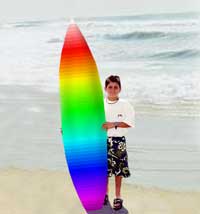 So
it's important to realize that the colors on your
So
it's important to realize that the colors on your





